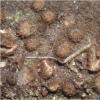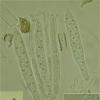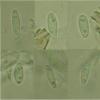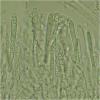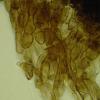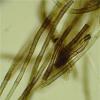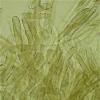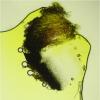
24-12-2025 17:08
Hulda Caroline HolteHello, I have found this propoloid ascomycete on

21-12-2025 09:32
Hello.A tiny ascomycete found embedded in wood in

21-12-2025 21:32
Pol DebaenstHello, Garden, Burgweg 19, Veurne, BelgiumOn 10/1

22-12-2025 23:38
Patrice TANCHAUDBonsoir, récolte sur un mur en pierre, apothéci

22-12-2025 00:47
Patrice TANCHAUDBonsoir, récolte à proximité du milieu dunaire
Pyrenopeziza escharodes
Garcia Susana,
27-03-2013 08:01
I think it could be Pyrenopeziza escharodes, but I have no security. What do you think?
The features are:
Apothecia size 500-700um
Asci biseriate, IKI +. croziers +. Size 50-58 x 5-6.5um
Paraphyses abundant vacuoles. Of 2-3.5um wide.
Spores fusiform, 9-11 x 2.5-3.5um
Reaction to KOH = intense yellow staining.
Excipulum medular angularis
Marginal hairs up to 120 x 6um, pigmented
Presence of a highly developed subiculum, thick-walled hyphae (x 4um)
Thanks in advance
greetings
Susana
Hans-Otto Baral,
27-03-2013 08:36

Re : Pyrenopeziza escharodes
Dear Susana
did you rehydrate your fungus? It will widely open its apothecia (wait for some minutes while keeping them under water).
The refractive vacuoles in the paraphyses and their yellow reaction clearly assign this to Mollisia. The subicular hyphae are also very characteristic of the genus.
What kind of Rubus du you have, blackberries? I think it is Mollisia rosae, and I see that Aebi 1972 lists the species also for Rubus idaeus. That species has simple-septate asci, and I could imagine that in your case there are no croziers but only basal protuberances. If you manage to show more ascus bases we could get more clear.
M. prunicola would have croziers and longer spores, but I am unaware of hosts other than Prunus.
Zotto
did you rehydrate your fungus? It will widely open its apothecia (wait for some minutes while keeping them under water).
The refractive vacuoles in the paraphyses and their yellow reaction clearly assign this to Mollisia. The subicular hyphae are also very characteristic of the genus.
What kind of Rubus du you have, blackberries? I think it is Mollisia rosae, and I see that Aebi 1972 lists the species also for Rubus idaeus. That species has simple-septate asci, and I could imagine that in your case there are no croziers but only basal protuberances. If you manage to show more ascus bases we could get more clear.
M. prunicola would have croziers and longer spores, but I am unaware of hosts other than Prunus.
Zotto
Garcia Susana,
27-03-2013 09:18
Re : Pyrenopeziza escharodes
Hello Zotto
I confused the name of the substrate. It was Rubus, but Rosa canina (very abundant in this area). So perfect with your identification.
Respect to croziers, surely you are right and also one case of protuberances on the base. Cost me find (I guess I wanted to see them).
thank you very much
Susana
?
